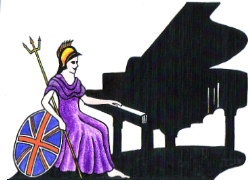Teachers, Accompanists and Piano Entertainers in the UK

UK Piano Page

Unit 60 The Triangle
Wolverton Park
Milton Keynes, Buckinghamshire MK125FJ
England
We are a family run music shop in Wolverton,
121-125 Royal Avenue
Belfast, County Antrim BT1 1FF
Northern Ireland
The Belfast music scene has been quietly turning
65 Sankey Street
Warrington, Cheshire WA1 1SU
England
Today, we supply all styles of Acoustic Piano,
11, St. Mary's Hill
Stamford, Lincolnshire PE9 2DP
England
Music shop established in 1963 we stock a large
251 Kings Road
Chelsea
Chelsea, London
England
Chelsea London was founded on the famous King's
Music Festival for performers and guests Our 10th
18-06-2022 01:30PM
The Morecambe Bay Piano Group was set up to extend
11-12-2021 02:00PM
The Morecambe Bay Piano Group was set up to extend
08-01-2022 02:00PM
The Morecambe Bay Piano Group was set up to extend
12-02-2022 02:00PM
Violin
A single violin is made from over 70 individual pieces of wood. the string tension is around 12 LBS compared to a pianos 160lbs on the steels and 20% more on the wound strings.